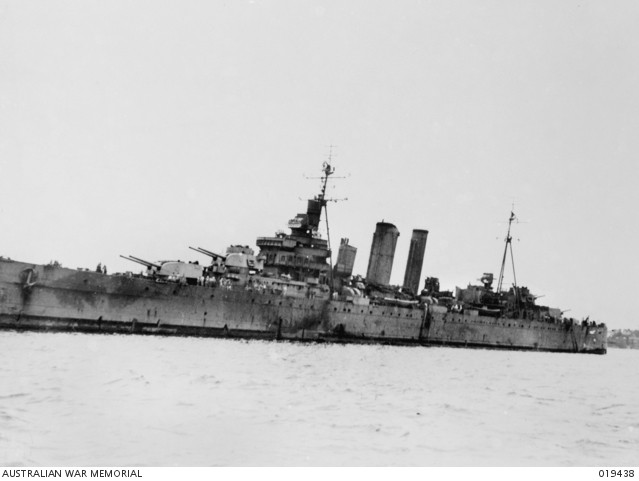In October 1944, a large combined United States and Allied fleet, also including Royal Australian Navy vessels, launched an assault to begin liberating the Philippines from Japanese occupation.
The fleet, in excess of 600 vessels, was about to prevail in the largest naval battle of the Second World War, the Battle of Leyte Gulf.
The Philippine Islands held enormous strategic value. Their liberation involving a series of amphibious landings beginning at Leyte, cut Japanese shipping routes, severing Japan from her supplies of oil, while also protecting the flank of US forces advancing through the central Pacific.
The RAN contributed heavy cruisers, destroyers and infantry landing ships, as well as a handful of supply, provision and ammunition vessels to the invading fleet.
‘No one could see this great panorama of ships without realising the impotence of any great army engaged in oceanic warfare without control of the sea and air’, wrote Captain Tarbuck, the United States Navy’s Senior Naval Adviser.
The assembled fleet arrived on 17 October and commenced a bombardment of Japanese shore positions and deployed minesweepers to clear a path to the shoreline. In the early hours of 20 October, the fleet entered Leyte Gulf and began landing operations supported by artillery bombardment from battleships, cruisers, destroyers and rocket ships.
Landing parties faced only light opposition from Japanese forces, and infrequent attacks from Japanese aircraft.
The next morning, a solitary Japanese dive-bomber struck HMAS Australia in the first apparent kamikaze (suicide) attack on an Allied vessel at Leyte Gulf. The aircraft struck on the port side, leaving in its wake 30 crewmen dead, including the ship’s captain, and 64 wounded.
For the Imperial Japanese Navy, the Battle of Leyte Gulf was a devastating defeat. With the loss of nearly 30 ships, it effectively removed it as an offensive force.
Today, we remember those who served and the Australians who sacrificed their lives in one of the most pivotal naval battles of the Second World War.
Lest we forget.
For more resources on the Battle of Leyte Gulf, including our 2024 commemorative poster acknowledging Australia's involvement, visit DVA’s Anzac Portal.

HMAS Australia after her return from the allied invasion of the Philippine Islands. The "Australia" suffered damage and losses at the landing at Leyte Island in 1944-10, and at Lingayen Gulf, Luzon, in 1945-01.
Image courtesy of the Australian War Memorial.